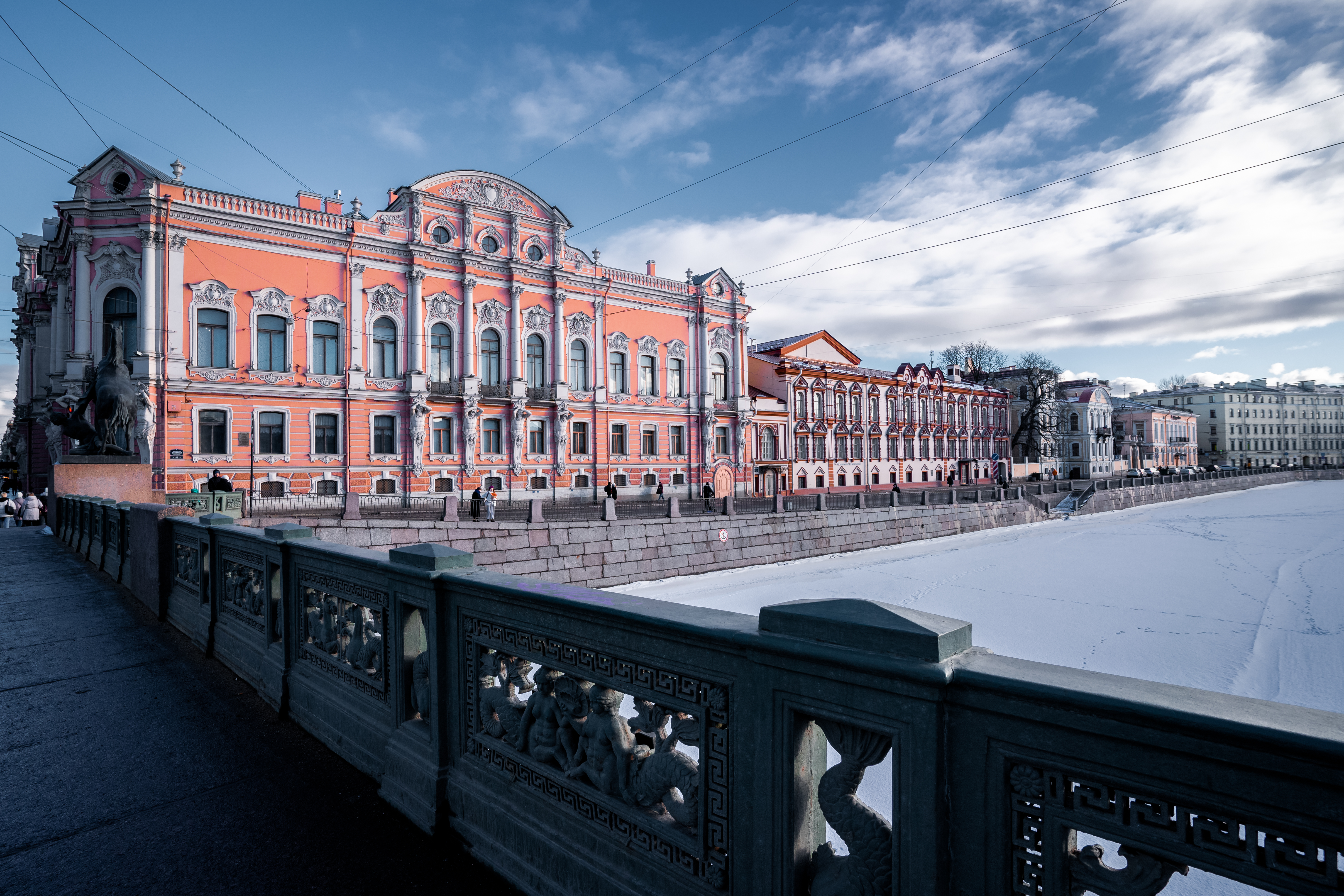 Back
Back
Beloselsky-Belozersky Palace

Saint Petersburg, Nevsky pr., 41
The Palace of Beloselskyh-Belozerskyh is a luxury and well-known palace located on Nevsky prospekt at its intersection with Fontanka River
Among the numerous architectural monuments that are located on Nevsky prospekt, one of the most notable is the palace of the Dukes Belosyskie-Belozerskie. It was built in 1848 by the famous architect of the Nicholas I era - A.I. Stakenschneider. The design of the building was presented to the emperor and he approved it. The built palace delighted the contemporaries. It was called «majestic palazzo» and «perfection in its own kind», and it was also written that Starkenschneider «made a true artistic feat». The Palace of the Dukes Belosyskie-Belozerskie became the last private palace built on Nevsky prospekt in the 19th century.
The first owners of the palace were representatives of the oldest princely clan, leading from Vladimir Monomah - Belosyskie-Belozerskie. Many of them were military personnel, diplomats and held important positions at the royal court. The gala events, arranged by the princes in their own palace in Nevsky, were famous for their scope and luxury. By their magnificence, they were compared to the imperial receptions at Winter Palace. The princes Belosyskie-Belozerskie were fond of music, theatre, literature, and collected art collections (paintings, porcelain, silver), which decorated the halls of the palace.
At the end of the 19th century, the palace was acquired by the son of Emperor Alexander II, Grand Duke Sergey Alexandrovich, on the occasion of his marriage to Princess Ella of Hesse (Grand Duchess Elisabeth Fedorovna). In 1911, the owner of the palace, Elizabeth Fedorovna, gave the palace to her nephew, Grand Duke Dmitriy Pavlovich (later known as the one implicated in the murder of Grigory Rasputin).
After the October Revolution of 1917 the building was nationalized. During the Soviet period, various public organizations were housed here, and the main tenant was the Communist Party of Kuibyshevsky District. During the blockade, the building was damaged by bombardment and shelling. After the war restoration work was carried out in the palace.
In 1992 St. Petersburg Cultural Centre was located in the palace. Since January 2003, the building has been transferred under the jurisdiction of the Office of the President of Russian Federation. Great attention is now paid to its technical status. Surveys and restoration work are carried out.
The original interior of the palace is preserved, among which the ceremonial halls on the 2nd floor stand out: the Oak Hall (the former library), which was used as a small concert hall, the Art Gallery, the Parade Dining Room, the Beige Lounge, the Mirror ballroom with a beautiful acoustics, since it was originally intended for concerts and is still used as such, the Golden Crimson Drawing Room. In all of these and other halls there is still the art décor of the middle-end-19th century: fireplaces, lamps, stucco, paintings, mirrors, furniture and much more.




 Listen
Listen  Download
Download